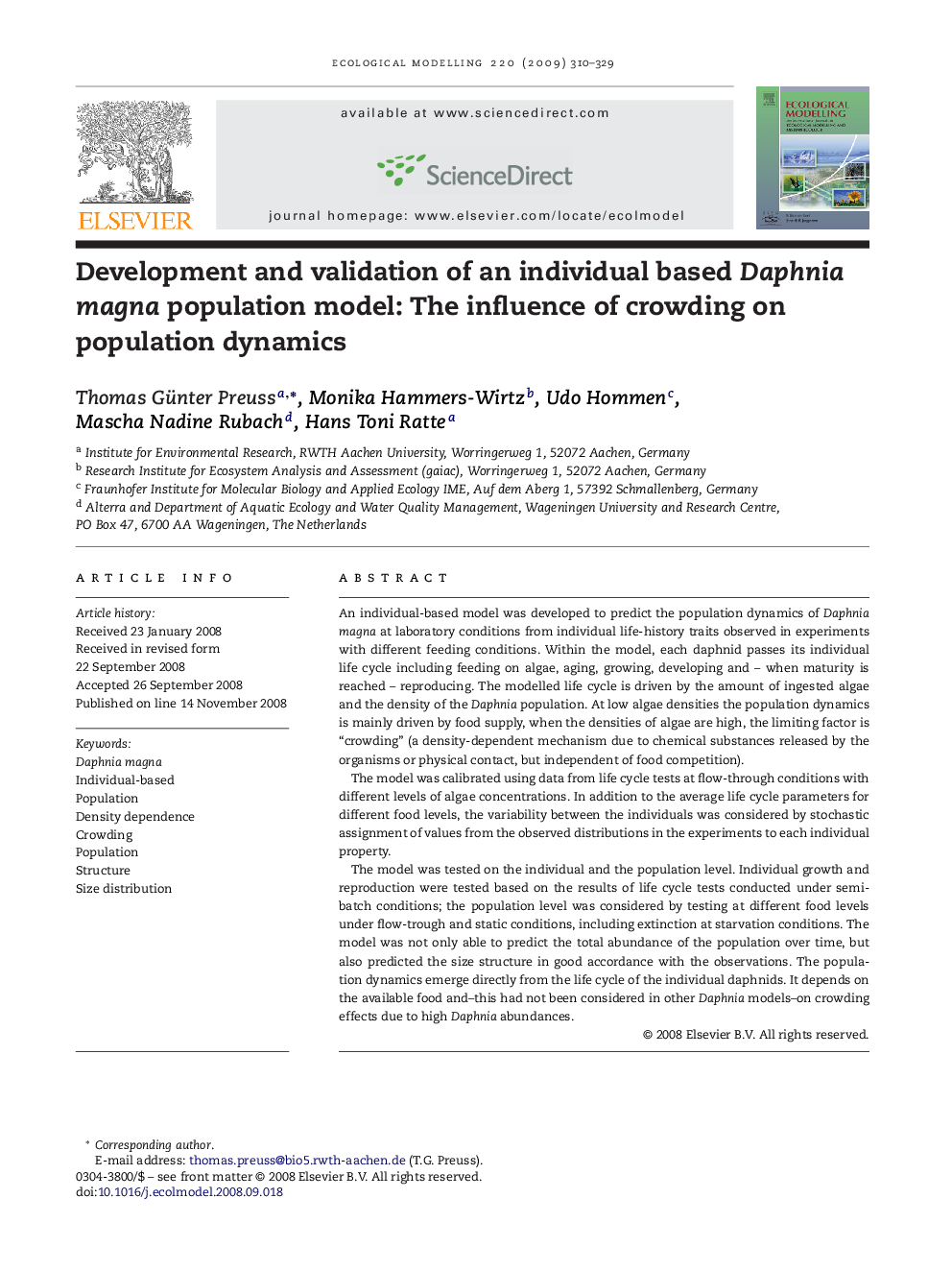| Article ID | Journal | Published Year | Pages | File Type |
|---|---|---|---|---|
| 4378285 | Ecological Modelling | 2009 | 20 Pages |
An individual-based model was developed to predict the population dynamics of Daphnia magna at laboratory conditions from individual life-history traits observed in experiments with different feeding conditions. Within the model, each daphnid passes its individual life cycle including feeding on algae, aging, growing, developing and – when maturity is reached – reproducing. The modelled life cycle is driven by the amount of ingested algae and the density of the Daphnia population. At low algae densities the population dynamics is mainly driven by food supply, when the densities of algae are high, the limiting factor is “crowding” (a density-dependent mechanism due to chemical substances released by the organisms or physical contact, but independent of food competition).The model was calibrated using data from life cycle tests at flow-through conditions with different levels of algae concentrations. In addition to the average life cycle parameters for different food levels, the variability between the individuals was considered by stochastic assignment of values from the observed distributions in the experiments to each individual property.The model was tested on the individual and the population level. Individual growth and reproduction were tested based on the results of life cycle tests conducted under semi-batch conditions; the population level was considered by testing at different food levels under flow-trough and static conditions, including extinction at starvation conditions. The model was not only able to predict the total abundance of the population over time, but also predicted the size structure in good accordance with the observations. The population dynamics emerge directly from the life cycle of the individual daphnids. It depends on the available food and–this had not been considered in other Daphnia models–on crowding effects due to high Daphnia abundances.
